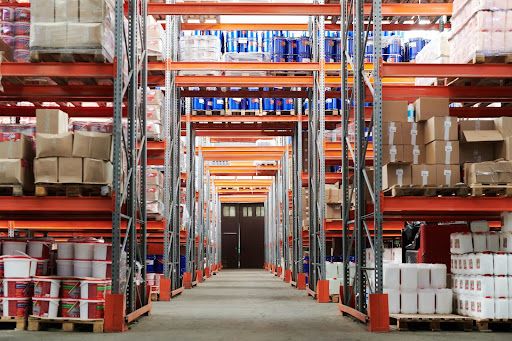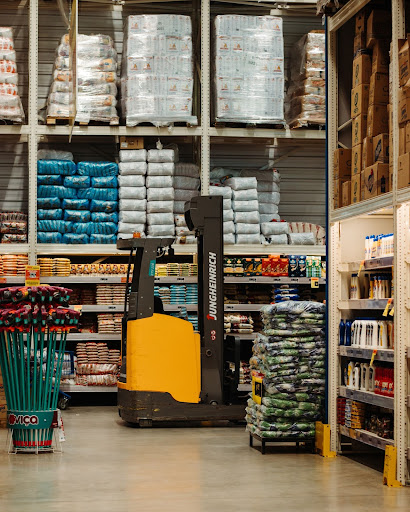Do you know that your competitor might be using warehouse automation technologies in their warehouses? Warehouse Automation is slowly gaining traction in many warehouses worldwide. Most warehouse owners are using automated technologies to cut costs and save time. As a result, warehouse automation technologies are slowly becoming popular, and the industry is expected to keep rising in the few years to come.
One of the solutions used in warehouse automation technologies is automatic storage and retrieval systems or ASRS. ASRS is a computer-controlled system that automatically stores and retrieves data or products from and to designated places.
Many warehouses have implemented the ASRS system, and it is easy to see why. The ASRS offers many benefits to warehouses looking to take their automation to another level.
Below you will see some top benefits of using ASRS in your warehouse and how it boosts warehouse automation.
1. Improved storage capacity
Proper shelving and effective grouping of goods are vital in distribution centers and warehouses. Finished goods, work in progress and raw materials need regular replenishing to ensure smooth inventory processing. Unfortunately, many warehouses are working on limited space, and there is a reason why.
Conventional forklifts and stackers require substantial space for effective navigation. In addition, traditional warehouse storage solutions need a lot of space to make every product easily accessible.
ASRS, however, is very compact. With ASRS, you can save up to 85% of your shelving space. And for your company or business, you can expand your product storage and manufacturing capacity.
2. Safer
Human workers constantly handling the storage and retrieval of goods in a warehouse can experience fatigue and sometimes muscle strain. Due to this, there may be instances of injuries and errors.
It is crucial to note that errors when operating huge manufacturing machines can result in severe injuries or even death. By using ASRS to automate these tasks in the warehouse, there are fewer chances of errors and, subsequently, fewer chances of injuries or other accidents.
ASRS can lift loads and goods that may be too heavy for humans to carry, reducing fatigue and possible injuries.
3. Transitioning can be modular
The initial installation of ASRS can be costly and has caused many to overlook the benefit of modular transitioning. With ASRS, one can migrate a warehouse operation into ASRS segment by segment.
For instance, an operation can consider moving fast-moving products first – cutting down on the initial expense and allowing for a smoother transition to full warehouse automation.
So if the initial cost hinders your warehouse automation plans, you should consider modular transitioning. It allows you to save money and allows for a slow yet effective transition. You also don’t have to wait until you have enough funds for the initial warehouse automation systems.
4. Reduced labor costs
By moving into full warehouse automation systems and especially the use of ASRS, some warehouses have replaced a section of human labor with a single ASRS. This move has seen so many warehouses saving a lot on labor costs.
For instance, if an ASRS can replace all the picking labor with a single ASRS, then the freed-up workers can move to work on more productive functions.
It may also reduce the costs of adding more warehouse space if there is a need to expand their manufacturing process. Other than that, having human labor forces the warehouse to incur some extra costs of health, training, payroll taxes, etc.
A single ASRS initial install can be ridiculously costly, but if you look on the brighter side, you would be saving a lot of regular costs as a warehouse.
5. Few labor constraints
A warehouse can have enough funds to expand its workforce, but external factors such as demographic trends and the job market can sometimes hinder the expansion. The ASRS, however, comes in place to enable automation and take the place of employees.
You can redirect your warehouse employees to take on higher-value tasks while technology handles the lower-value tasks.
6. Improved accuracy, efficiency, and productivity
Humans are susceptible to errors, and errors are bound to happen no matter how trained, diligent, or skilled they are. These errors may confuse and negatively affect workflows.
For example, a pallet of goods removed from storage and delivered to the wrong department can cause confusion for the rest of the warehouse. This error can cause confusion, possible traffic jams, and in the end, a shutdown until the error is fixed.
ASRS can easily eliminate these errors and inefficiencies, ultimately increasing warehouse input and reducing waste. And in the end, your warehouse will be more accurate and profitable.
Implementing ASRS into your warehouse operations is one of the best ways to boost your warehouse automation process. If you are interested in this, visit The Slate River Systems Inc. website for more information about AS/RS systems. It may be expensive, but as you may have seen, the benefits are worth the cost.



